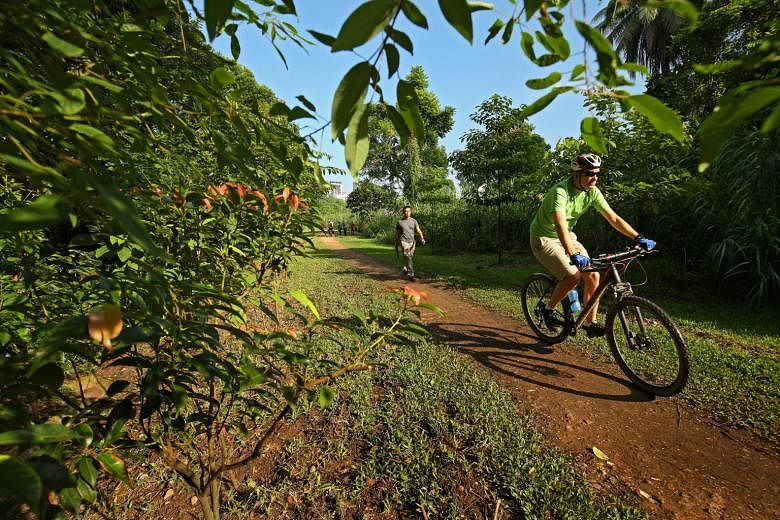Land in Singapore had changed from being a net absorber of carbon in 2012 to a net emitter in 2014, due largely to land conversion from forests and other vegetated areas to settlements, a recent study by the National Parks Board (NParks) has shown.
However, net emissions from land use is still small - contributing just 0.12 per cent of Singapore's total emissions for 2014.
This figure has fluctuated over the years, with Singapore's land use and forestry sector being a net absorber in some years and a net emitter in others.
The major source of greenhouse gas emissions here is the combustion of fossil fuels for energy. About 95 per cent of Singapore's electricity is generated using natural gas, a fossil fuel.
The study on how the land use, land-use change and forestry sector absorb and contribute to carbon emissions was undertaken as part of preparations for the Biennial Update Report, which Singapore submits to the United Nations Framework Convention on Climate Change every two years as part of its international obligations.
The report provides information on the breakdown of national greenhouse gas emissions and removals, and actions taken to reduce them.
Data on emissions and removals from land use in 2012 was outlined in the report submitted in 2016, while 2014 data was highlighted in the latest report submitted in December last year.
The way land is used can contribute to climate change in various ways. For instance, land used for agriculture may contribute to this because growing crops, such as rice, or gases produced by livestock can emit planet-warming gases into the atmosphere. On the other hand, vegetated areas such as forests are carbon sinks - they reduce the amount of heat-trapping carbon dioxide in the atmosphere.
Associate Professor L. Roman Carrasco from the National University of Singapore's department of biological science, said forests help to mitigate climate change in two ways.
First, through photosynthesis, trees take in planet-warming carbon dioxide from the atmosphere. Second, they lock the absorbed carbon in their trunks and roots, preventing the carbon from being re-emitted into the atmosphere.
Said Prof Carrasco, who studies tropical forests: "Compared to cutting the forest and planting new trees, keeping mature forests is a much more effective way to prevent climate change."
In a way, it is similar to building a nest egg for retirement. If an entire account is wiped out, it would take some time before the same amount is saved up again.
NParks' deputy director for international biodiversity conservation Hassan Ibrahim said: "Nonetheless, our vegetated and forest areas, consisting of mainly our nature reserves, other nature areas and mangroves continue to serve as carbon sinks for Singapore."
In January, NParks also unveiled a Forest Restoration Action Plan to regenerate secondary forests in the nature parks buffering the Bukit Timah and Central Catchment nature reserves, as well as disturbed patches within the reserves, to help the forests regenerate.


